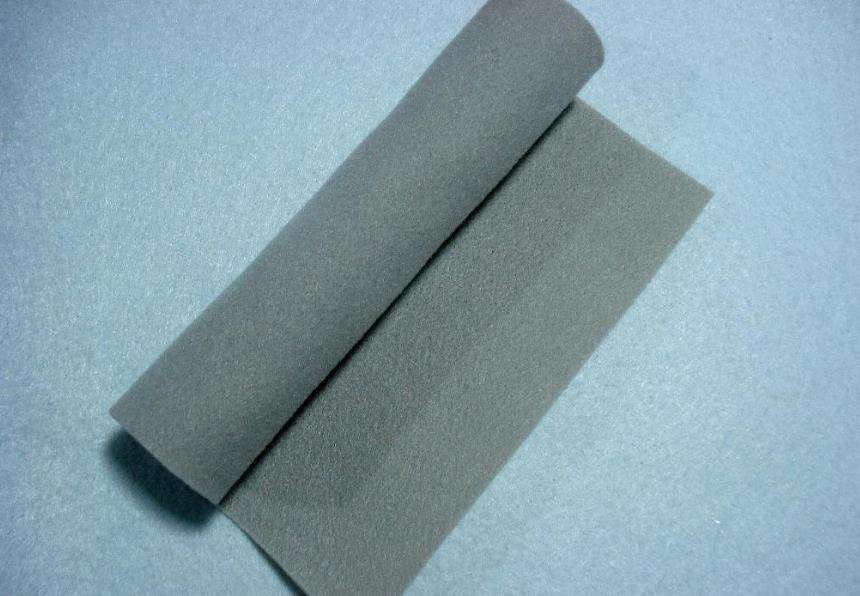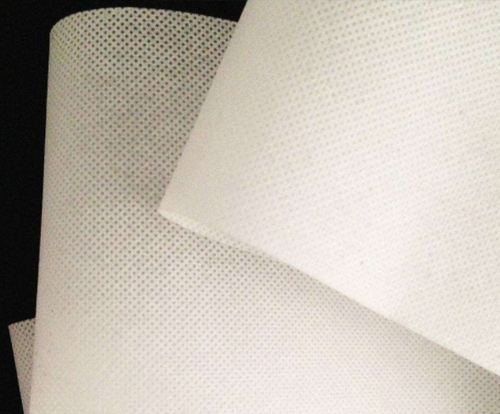Because SMS non woven fabric must have strong hydrostatic pressure resistance and good air permeability when it is used in the field of sanitary products to prevent side leakage of sanitary napkins, sanitary pads, baby diapers and other products, and in the medical field as advanced surgical clothing and protective clothing. However, in the production of legcuff SMMS non woven fabric, hydrostatic pressure resistance and air permeability are contradictory. Improving hydrostatic pressure resistance usually reduces air permeability. Therefore, it is difficult to ensure that the product has high hydrostatic pressure resistance and good air permeability at the same time. In view of this contradiction, this paper studies the changes of hydrostatic pressure resistance and air permeability of SMMS material when the production process changes, and obtains the influencing factors of hydrostatic pressure resistance and air permeability and better process settings, which has certain guiding significance for relevant manufacturers to produce products that meet customer requirements.
In the production of legcuff SMMS non woven fabric products, the melt extrusion amount is an important factor determining the weight of the product. At the same time, it is also an important factor affecting the hydrostatic pressure resistance and air permeability of SMMS products. The melt extrusion amount is determined by the rotation speed of the metering pump. Under the same conditions, the faster the rotating speed of the metering pump, the greater the melt extrusion. When the mesh belt speed is the same, the larger the melt extrusion amount, the greater the gram weight of the product, and the hydrostatic pressure resistance and permeability of SMMS products have also changed accordingly. Due to the limited experimental conditions, this experiment only changes the rotation speed of the metering pump of head C (the four nozzles of SMMS correspond to ABCD). Through experiments, it can be concluded that when the air volume is certain, the metering pump cannot be too fast, and the quality should be ensured while ensuring the product quality. The manufacturer can set the rotating speed of the c-head metering pump to 32~35rpm to meet the requirements of hydrostatic pressure resistance (>35mbr) and air permeability (>45cfm). Its products can be used as general protective clothing.

Through experiments, it can be concluded that the production of the same gram weight legcuff SMMS non woven fabric products can meet the same requirements of hydrostatic pressure resistance and permeability, which can be achieved by changing the extrusion volume of the metering pump and controlling the speed of the mesh curtain. In the actual production process, it is usually to try to improve the speed of the screen conveyor curtain and adjust the extrusion amount of the metering pump to ensure the needs of high-speed production.
When the spinneret hole is fixed, the hot air volume will increase, the air velocity will accelerate, and the fiber will be drawn more fully, which has an important impact on the hydrostatic pressure resistance and air permeability of legcuff SMMS non woven fabric. Through experiments, it can be concluded that the anti hydrostatic performance of the base cloth increases with the increase of the hot air volume. When the air volume reaches 2800 m3 /h, its anti hydrostatic performance is the best. But then, with the increase of hot air volume, the hydrostatic pressure resistance performance decreases. When the hot air volume reaches 2800 m3 /h, the air permeability is the minimum. The trend of permeability curve is opposite to that of hydrostatic pressure curve. Therefore, the manufacturer can control the hot air volume of 2800 m3 /h, which can meet the requirements of hydrostatic pressure resistance (>5mbr) and permeability (>45elm) at the same time.

This paper draws the following conclusions through experiments:
1.Gram weight is an important factor affecting the hydrostatic pressure resistance and air permeability of products. The rotational speed of the metering pump and the rotational speed of the screen conveyor determine the weight of the gram. It is appropriate to set the speed of the c-head metering pump at 32~35rpm when keeping the speed of the screen conveyor curtain at 175m/min.
2.The larger the gram weight of legcuff SMMSnon woven fabric products, the greater the wet resistance and the greater the hydrostatic pressure resistance; The greater the air permeability resistance, the worse the air permeability.
3.Increasing the air volume of hot air will make the fiber fineness thinner, but if the air volume is too large, it will produce flying wire. The ideal value should be controlled at 2750-2850 m3 /h. At this time, SMMSmaterial products have good hydrostatic pressure resistance and air permeability, and can be used as general protective clothing.
Comment(0)
You can comment after
SIGN IN